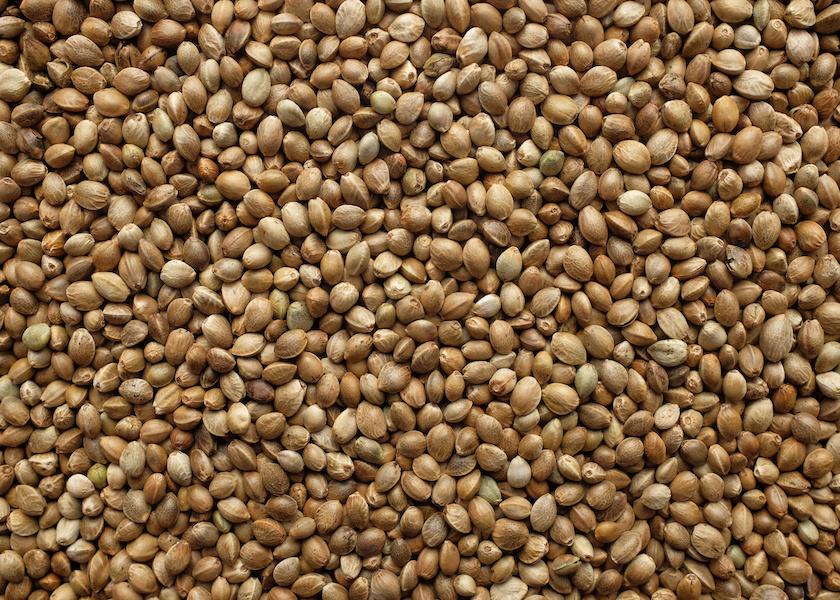Is Hemp Headed for Dairy Rations?

The 2018 Agricultural Improvement Act (“Farm Bill”) expanded the legal production of hemp in the United States. But much work still needs to be done in the regulatory arena regarding hemp applications.
To clarify, hemp and marijuana are not one in the same. They both are from the same class of plants of the Cannabis genus, but are legally separated by their level of tetrahydrocannabinol (THC) in the plant. Legal hemp must contain 0.3 percent THC or less. In short, hemp can’t get you high.
Hemp has a wide variety of uses, which often earn it the moniker “industrial hemp.” These include rope, textiles, human food products, paper, bioplastics, building materials, and biofuels. Prior to prohibition in the U.S. more than 80 years ago, hemp was a significant commodity crop in many parts of the country.
Tillery Sims, Executive Director of the Texas Hemp Growers Association, is working to restore hemp’s role in the commodity rotation for crop farmers. “We want to be a reliable resource to farmers to give them a place for consistent information about hemp,” Sims shared on a webinar during the virtual 2021 World Ag Expo.
Joining Sims on the webinar was Hunter Buffington, then Executive Director of the Hemp Feed Coalition (HFC). Her organization’s mission is to gain federal approval for hemp and its byproducts and create new markets in another potentially important application: animal feed. She said approval of hemp’s use as animal feed will bring more value to farmers, as they will be able to utilize or market every part of the plant.
Hemp seed is a grain that is generally recognized as safe (GRAS) by the U.S. Food and Drug Administration (FDA) for human consumption. It does not produce any cannabinoids, which are found in the flowering part of the plant. HFC points out that hemp seed meal – comprised of the hull of the seed after the oil has been extruded – is a highly nutritious protein, fiber, and lipid source.
Buffington shared collective data from 40 American-grown and -processed hemp seed meal products from three different varieties grown in 10 states. The data was collected from 40 individual Certificates of Analysis. It was found to be a highly homogenous ingredient, with the following nutritional profile:
- Crude protein: 33.5%
- Crude fiber: 34.05
- Crude fat: 10.1%
- ADF: 34.65
- NDF: 43.6%
- Calcium: 1,584.71 ppm
- Phosphorus: 8,254.06 ppm
- Selenium: 1.28 ppm
- Sodium: <25.00 ppm
- Lysine: 10.44 mg/g
- Methionine: 5.48 mg/g
“Gaining federal approval is a time-consuming, expensive, data-driven process,” said Buffington.
The HFC submitted its first application for a new ingredient definition approval from the Association of American Feed Control Officials (AAFCO) in 2020. Their hope is the application process, which starts with AAFCO, will ultimately lead to the approval by the FDA’s Center for Veterinary Medicine (FDA-CVM) as the first federally approved hemp feed ingredient. The application is for hemp seed cake and meal to be fed to laying hens.
FDA returned the application to HFC in 2021 with a request for more data.
In February 2022, AAFCA issued a Joint Open Letter of Concern over the Allowance of Hemp in Animal Feed. Addressed to agricultural leaders and state policymakers, the letter was a caution against individual states circumventing federal review approving hemp in animal feed.
“Currently, no hemp ingredients have been approved through the established animal feed ingredient pathways,” the letter stated. “It would be imprudent to bypass these established procedures needed to protect both human and animal health and unilaterally legislate approval of animal feed ingredients at the state level.”
Further details in the letter addressed concerns for (1) animal health and safety; (2) safety of food from production animals entering the human food chain; and (3) legal implications for animal producers and feed manufacturers.
Included among the 17 organizations signing the letter were the American Dairy Science Association, American Association of Bovine Practitioners, American Veterinary Medical Association, National Cattlemen’s Beef Association, and the Federation of Animal Science Societies.
“We understand the importance of supporting the hemp industry, and yet we also believe it is simply too soon to know whether hemp is safe for farm and ranch animals, as well as for our pets,” the letter stated.
The HFC, in turn, has issued its own statement in response to the AAFCO letter. In it they stated the AAFCO letter “deliberately conflates hemp grain with cannabinoids, greatly setting back the years of progress the industry has made educating our colleagues in the traditional agricultural world on how the parts of the plant differ and the highly nutritious value grain brings.”







